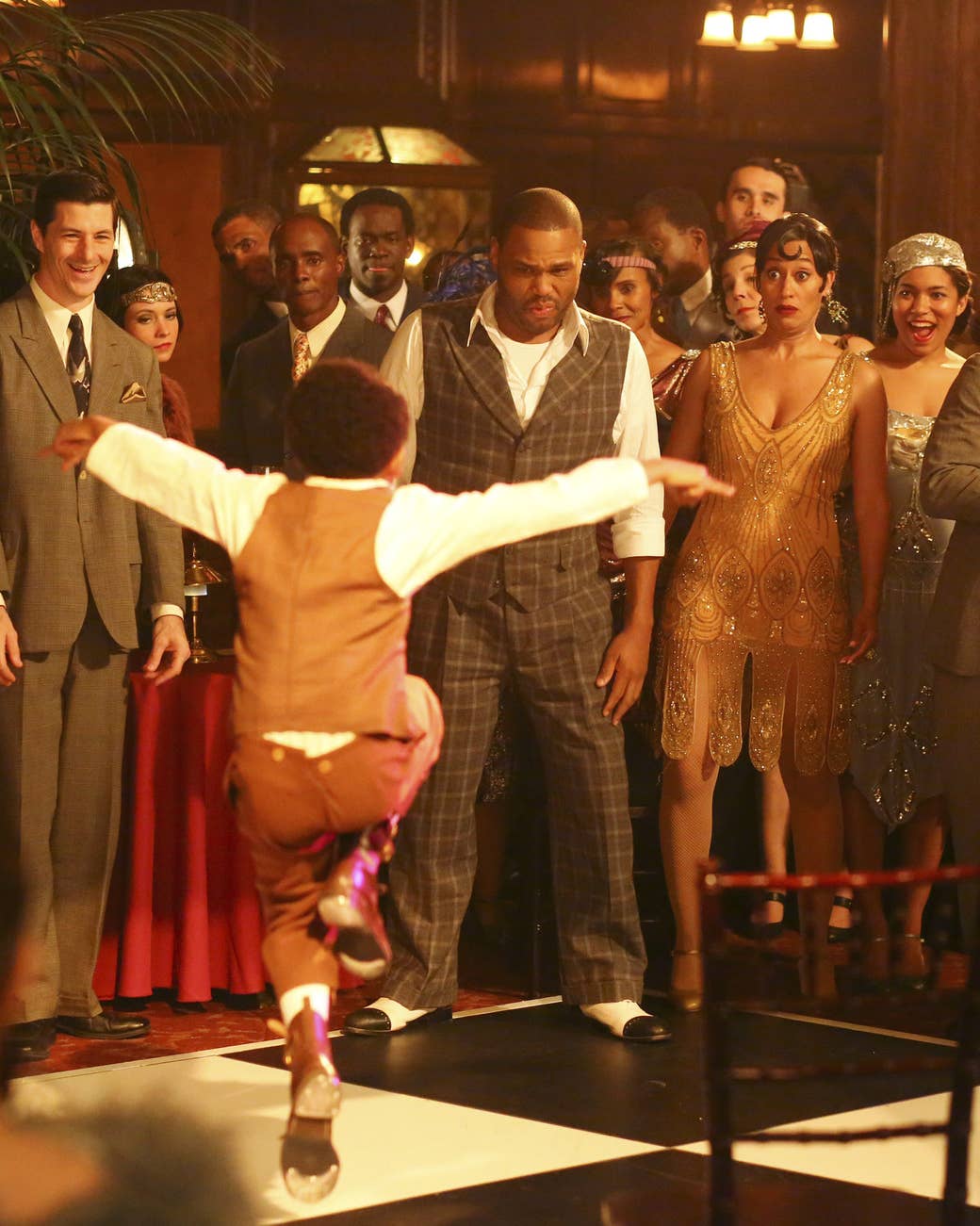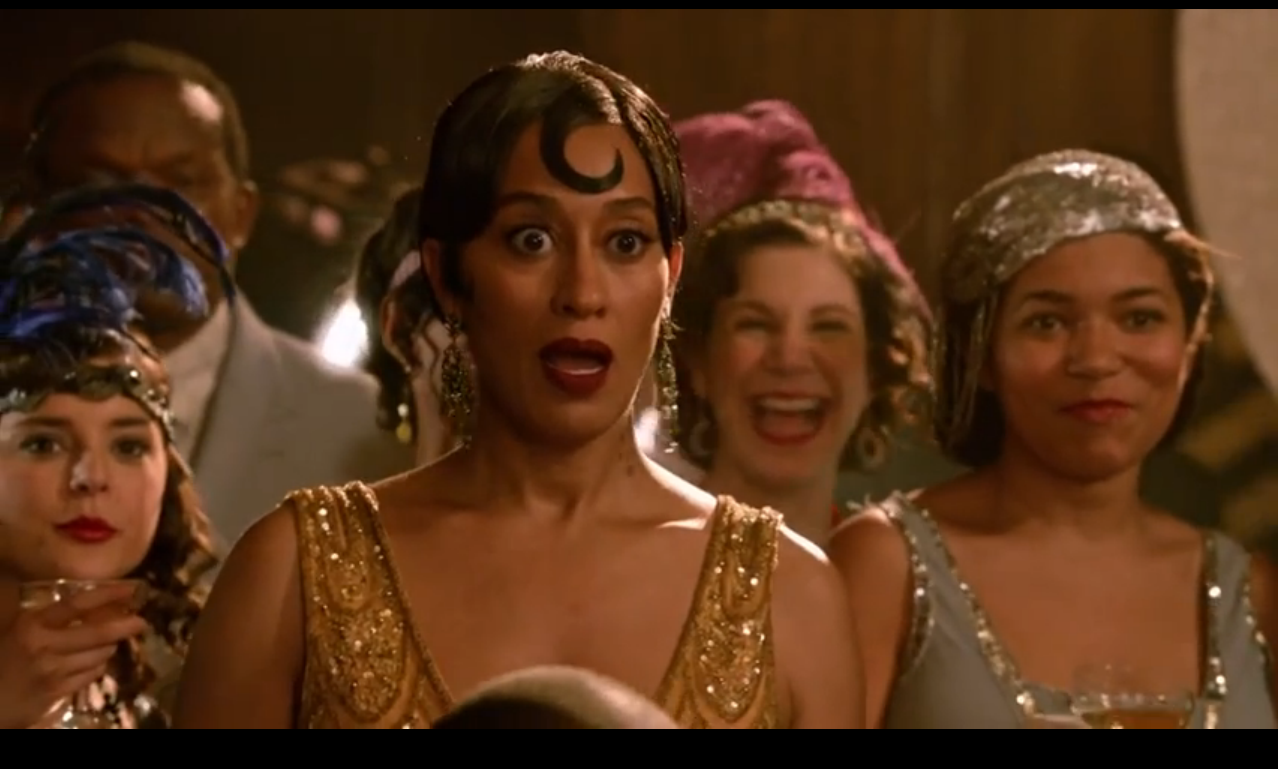
Here’s a glimpse into my most glamorous workday ever:
I was wearing a drop-waist dress with intricate beading along the bodice and skirt. Long, white satin gloves were pulled up over my elbows and strands of beads hung from my sequined cap. My eyelids were fluttering as the makeup artist applied the last of my false eyelashes, and I couldn’t help but pull out my phone for a commemorative selfie. The makeup artist looked at me incredulously.
“Have you ever done a period piece?”
“No,” I replied instantly.
I’m a background actor who is also a person of color, I thought. When would I have had the chance?
Background acting is the art of filling up space. Anytime you see a crowd of people in a movie, TV show, ad, or even music video, that’s where I come in. I’ve been a Republican supporter at a political rally, a prison inmate intent on escape, and a day-glo raver in a club scene. After doing stray background scenes here and there for a little over a year, I went full time last spring, during pilot season. That's when potential new shows are shooting their first episodes and established shows are winding down with their finales, and everything basically goes 0 to 100.
Less so for actors of color. You might see 10 casting notices a day, but the number open to non-Caucasian actors is considerably smaller. Even when a notice does include spots for actors of color, it’s often such a small quota that by the time you get through, you’ll hear, “I’m all booked up in your category.”
The lack of roles Viola Davis noted in her historic Emmy acceptance speech last week trickles all the way down to us extras, especially when it comes to historical dramas. Period dramas are booming on TV— representing the histories of Western Europeans (Downton Abbey), their faux-mythical ancestors (Game of Thrones) and their American descendants (Mad Men). Which leaves the opportunities for actors of color pretty much limited to slaves and other help. I grew up watching Titanic, Anne of Green Gables, and Masterpiece Theatre, but could I have appeared in them?

So it was a thrill when I found myself in a historical hotel in middle of downtown Los Angeles this spring, on a rush call notice for the season finale of ABC sitcom Black-ish, which took place during the Harlem Renaissance. Set in a nightclub, the episode is one big flashback sequence that tells the Johnson family’s history. It’s as close as I’ve come to a drama in a period with black people at the center.
As a background actor, it’s common to arrive camera-ready, with your own wardrobe options and hair and makeup done. For Black-ish, I — along with 125 other extras — was ushered into a wardrobe trailer where an array of authentic vintage dresses and replica gowns in metallics and sequins hung on racks like jewels.
Wardrobe wasn’t the only way the shoot was unique. For one thing, it was a multi-day call, spanning three long days and, as a result, offering above-average pay. More remarkable was the cast, which included so many actors of color, around 60%.
It’s hard to overstate how rare this is, even for shows with lead actors of color. I was cast in one, which was set in already-diverse Miami. Still, a large call for 150 extras yielded only a handful of slots designated for actors of color. It was a church scene and the description was “upscale,” which the casting director took to mean that the congregation was predominantly white.
I had been skeptical of the latest wave of diverse sitcoms. Fresh Off the Boat and Black-ish seemed only able to bring casts of color to primetime through the lens of race relations. I grew up when shows like Hangin' With Mr. Cooper, Sister, Sister, Family Matters, and the The Fresh Prince of Bel-Air ran alongside programs like Step by Step, Full House, and Sabrina, the Teenage Witch. They weren't seen as "black shows" or "white shows.” They were mentioned in the same breath over Lunchables in the cafeteria. Polls suggest millennials think they’re colorblind. And I have to admit I didn’t see myself in color until high school and adulthood, thanks, in part, to multicultural ‘90s kid programming.
So I was caught off-guard on the last day of the Black-ish shoot, when creator Kenya Barris delivered a wrap speech to the 150-odd flappers posed on ornate staircases. Barris thanked guest stars Mary J. Blige and P. Diddy, and the network for broadcasting a show like Black-ish — a show that was "for us." What happened, I wondered, to network shows that were for everyone, yet featured nonwhite families? I like to think of myself as a human first — a human who happens to be brown. But as casting notices make clear, you’re seen by your race and gender first.

What I wound up feeling was that minority-driven productions, whether they deal explicitly with race, like Black-ish, or conspicuously avoid it, like The Cosby Show, equally offer media representation. Sitting in the tents between takes, glancing around at my fellow actors checking their phones and looking like a bunch of time-travelers, the thing I noticed was that the cast wasn’t even principally black. The percentage was pretty evenly split racially, and that in itself was huge. It was abnormal in that it was closer, more representative of normal life outside of the set.
Sipping on lemonade, the vibe was social as we traded talents and tips. Up until that point, I’d only been managing to work roughly once a month, but seeing other actors of color succeeding, hearing that they managed to work once a week, made me realize it was possible and compelled me to take it on full time.
As we gathered around for a final toast, the enormity of the occasion hit me: actors of color working en masse and in a strong and beautiful light. Not beneath the stairs or in the fields, but the black experience alive with the beauty and accomplishment of Harlem in the 1920s. Not fighting for equality or being at a disadvantage, but simply being fabulous.
As for my performance? Strutting across the dance floor dressed to the nines might not seem revolutionary. But on set, in front of the cameras, it felt that way.
